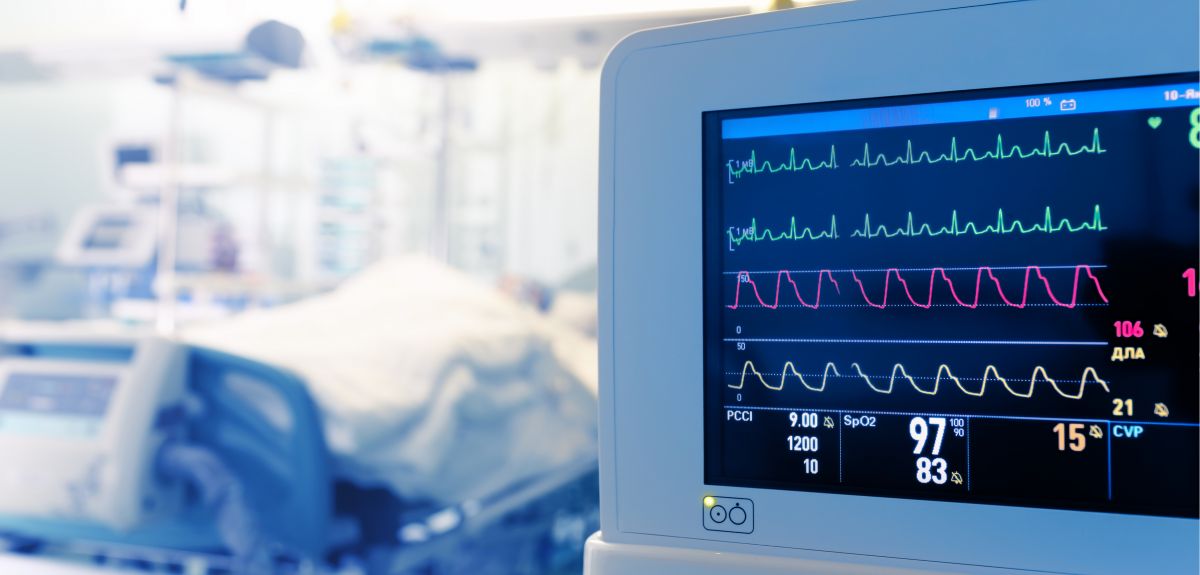
Image credit: Shutterstock
New sensor to improve intensive care monitoring of breathing
An innovative new sensor could improve how hospital staff monitor patient breath rates and stability, according to new Oxford University research.
It is commonly understood that in both healthy animals and humans, arterial blood oxygen levels stay constant as we breathe. However, until now, the technology available has not been fast enough, or small enough, to be able to measure and demonstrate this.
In a new paper published in Scientific Reports, researchers from the University of Oxford and King’s College London, developed and tested a new sensor that by effectively measuring arterial oxygen levels, has disproved the misconception that they stay constant. Instead, the sensor picked-up that arterial oxygen rates actually fluctuate as we breathe.
Developed as part of an inter-disciplinary collaboration, the ultrafast fibre optic sensor is the first of its kind to capture respiratory oxygen levels successfully. These new insights support better understanding of how our lungs function and could potentially support bespoke ventilation care for patients (humans and animals) in intensive care units, and for people with diseased lungs in general.
Dr Federico Formenti said: ‘The development of this new technology allows us to understand the functioning of our lungs better. This study demonstrates that arterial oxygen is not necessarily constant during a breath, and that it can change very rapidly in fractions of a second as we breathe in and out, and during a breath hold.’
Dr Formenti and colleagues conducted their experiments on anaesthetised animals that had received artificial respiration. As the air pressure and volume of the lungs varied during the respiratory cycle, they measured the animal’s arterial oxygen levels. The findings show that arterial oxygen levels increase when the animals breathe in (inspiration), and decrease when they breathe out (expiration). Using an analysis method called computed tomography, these respiratory changes were associated with variations in lung volume.
Professor Andrew Farmery, Head of the Nuffield Division of Anaesthetics at Oxford University, elaborated on the potential clinical usefulness of this new technology: ‘Our detection of these oscillations in arterial oxygen levels, seen here in healthy lungs, has potential to further our understanding of oscillations seen in sick patients with respiratory failure receiving artificial ventilation in Intensive Care Units. Preliminary observations reveal that the oscillations are considerably more pronounced in injured lungs, and so this may be a useful ‘signal’ to allow treating clinicians to tailor ventilator therapy uniquely to the individual.’
These results will form the basis of future studies that will look more intensively at models of lung disease. Over time the research stream will identify other ways that respiratory behaviour can be better monitored and patient care can be improved in hospitals in the process.
The full paper, 'Respiratory oscillations in alveolar oxygen tension measured in arterial blood,' can be read in the journal Scientific Reports.
 International collaboration launches largest-ever therapeutics trial for patients hospitalised with dengue
International collaboration launches largest-ever therapeutics trial for patients hospitalised with dengue
 Oxford-built multi-agent assistant for cancer care to be piloted in collaboration with Microsoft
Oxford-built multi-agent assistant for cancer care to be piloted in collaboration with Microsoft
 World's first Phase II Nipah virus vaccine trial launch
World's first Phase II Nipah virus vaccine trial launch